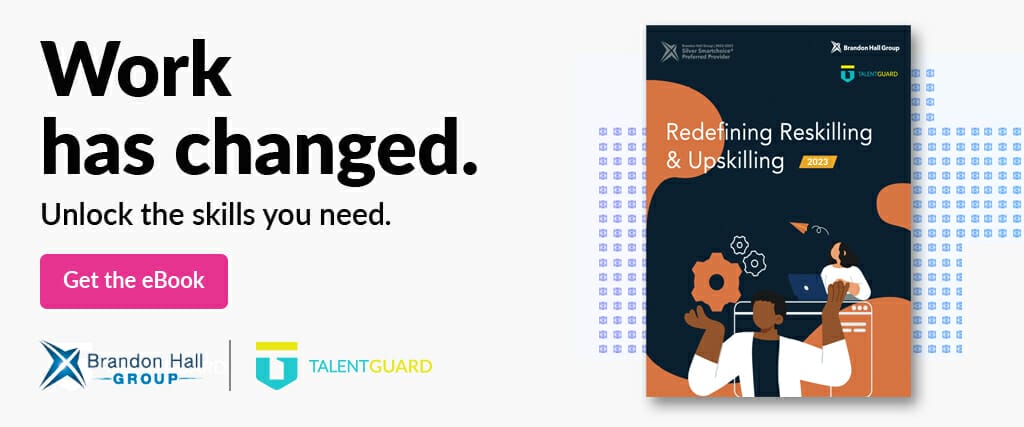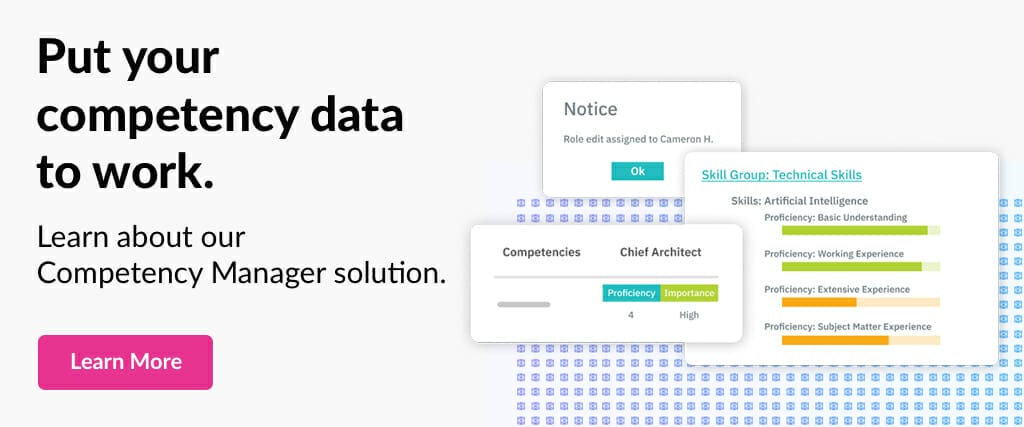What’s the Difference Between Skills and Competencies?

Employees are often told that they need to improve their skills and be more competent in their position in order to advance in their careers. Unfortunately, employees mistake skills and competencies as one and the same. After all, a skill sounds very similar to a competency to the average employee. This failure is the result of general knowledge and a lack of communication.
Many managers and HR teams may not effectively communicate the proper definitions for skills and competencies to their teams. This can create gaps in skills and competencies when employees are looking for guidance on how to further their careers. If managers confuse skills and competencies they could end up leading their employees on the wrong path.
Fortunately, this misunderstanding can be corrected at both the organizational and individual level. Clearly communicating and defining the difference between skills and competencies can help managers and HR teams create better development plans for their employees. These employees can then potentially fill key roles in the organization later on in their career.
What Is A Skill?
A skill is the ability to perform an action to create a desired result. Every employee has a unique set of skills that they utilize throughout their workday. Whether that skill is operating a machine that no one else knows how to work or welding two steel beams together, skills are key to employee success.
Skills can be a great way to eliminate potential job candidates. If a candidate does not have the ability to operate a computer, they will probably not be able to perform your open job for a software engineer. The most common breakdown of skills is hard skills and soft skills.
Hard skills are technical knowledge and training that enable an employee to have the ability to complete a specific task. Hard skills range from mopping a floor to 3D modeling. Meanwhile, soft skills are focused on how employees interact with each other and behave in the workplace. Handling conflict, listening skills, and writing are all soft skills that are often needed to succeed in a position.
There are usually several skills that are listed on a job description. Job candidates can identify if they have the ability to perform the job they are applying for based on the skills listed. Microsoft Excel is listed on many job applications as a desired skill for a job candidate.
What Is A Competency?
A competency is more or less the ability of an employee to properly implement their skills into a workplace environment. An employee can have all of the skills in the world, but they may not be able to translate those skills into job success. A competency combines skills, behaviors, knowledge, and abilities that enables an employee to effectively perform their job. Competency describes exactly how an employee performs and succeeds in their position.
Some organizations may have their own competency models that are a framework for employee positions. Employees can look to the standards in a competency model to understand exactly what they need to accomplish to be a successful performer. Competency models often have to be updated as an organization changes and grows.
What Is The Difference Between Skills And Competencies?
The difference between these two terms are often confused but there is a stark difference between skills and competencies. Generally, a competency is much more difficult to learn than a skill. An employee can take a 20 hour Quickbooks course and become fairly skillful using the software. A competency, such as negotiating, cannot be taught in a 20 hour course.
Generally, employees will be eager to learn new skills whenever they are given a chance. When it comes to developing their competencies, employees may not be as eager. An employee learning to become more component in their position is more akin to changing how they work and their behavior. That is a much more difficult change to make. It can take years to change an employee’s personal behaviors. This can have dramatic effects on the long-term career trajectory of an employee.
A stock broker could be the best trader and analyst in the world, but if they lack interpersonal abilities and cannot handle stress then they may not be able to perform the job effectively. A less-skilled stock broker with better interpersonal abilities who can handle stress may actually perform better in the position.
Competencies can be more difficult to judge as well when trying to evaluate an employee or candidate. A skill is generally easier to quantify. A typing test measuring how many words per minute a candidate can type will showcase their typing skills. Meanwhile, judging if an employee is competent in their position can be much more subjective and difficult.
Which Is More Important?
Both skills and competencies are important to the development of any employee. Employees cannot display competencies without certain skills that are required for their position. In order to advance in their career, an employee must learn and improve both their skills and competencies.
Companies need to balance both competencies and skills when developing employees for future roles. A narrow focus on skills will lead to employees that have all of the skills to succeed, but do not have the other intangibles that are necessary to fill key positions. HR teams clarifying the terms will help both employees and managers get on the same page on what employees need to work on to advance their careers. This should lead to a reduction in employee turnover and improve employee engagement.
Establishing a common definition for skills and competencies can help your organization grow more skillful, competent employees. A shared understanding of these terms will eliminate any confusion both inside and outside the company. Helping your employees develop skills and competencies will ensure that your organization will be able to fill key roles in the future.
To learn more about how to leverage skills and competencies inside your organization, take a look at our competency management software.
For more helpful information and best practices, check out the webinar called:
How to Build an Adaptive AI-Assisted Career Architecture
The Importance of Job Architectures in Achieving Pay Equality
Companies have always had a hard time determining the right approach for designing a job architecture that supports pay equality, and diversity. It’s a complicated process when you have to ensure you hire and develop the right talent, adhere to diversity measures, all while making sure you’ve achieved pay equality.
Why Your Hiring Freeze Shouldn’t Scare You
Due to hiring freezes, a large number of companies have been abruptly limited to their existing talent pools to staff projects and fill skill gaps. However, we don’t think that should scare you. Instead, if you focus your energy on the optimizing your existing workforce, you can overcome these obstacles and set yourself up for success in the long-run.
Taking the Right Approach to Developing Critical Skills
Gartner’s 2020 Future of HR Survey names building critical skills as the #1 priority – together with addressing internal skills gaps. To identify the skills your organization needs, Gartner recommends a ‘’market driven, predictive approach’’. This requires both an understanding of the trends in your specific sector, together with a skills audit to gain an accurate picture of the skills your business needs to grow and remain competitive.





